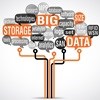The world has gone digital is a term we hear far too often nowadays, but it's not exactly true. It is true that the world is transforming, but there is an increasing distinction between those who are leading the change and profiting from it, and those who are falling behind and missing the many opportunities.
So, what does digital transformation really mean to business? Digital transformation is based on a beautiful two-way street – you provide your customers with the information, content, products and services that they want, when they want it, and how they want it.
They, in turn, appreciate the relevant, seamless experience you have given them and keep coming back for more. We call this standout digital engagement, it means that by delivering rewarding, optimised, contextual experiences, you can increase conversions, page views and engagement.
Standout engagement
If you work with digital marketing or campaign management, you probably have some clear goals for your digital presence: increased engagement, conversions and website page views, with content that works on any device.
This is an exciting time to be in digital marketing – there have never been more opportunities to provide outstanding experiences for your customers. At the heart of your digital experience is your owned media: your web and mobile sites. When redesigning or rebranding, however, there are a few challenges that need to be overcome.
One basic challenge is time. Another challenge is coordinating several marketing activities across diverse systems, channels and markets to provide a seamless experience for users. Ideally you would be able to easily develop content for campaigns, landing pages and social media and launch it across several channels with a single click.
And have the system figure out what is most relevant to each visitor, which would convert leads faster and drive more prospects down the funnel.
Agile marketing
It would be great if you could sit in your chair and use your mind powers to make all of your campaigns magically align around the world. And simply by touching your fingertips together you could sense what your customers cared about, and understand why they continued their journey – or went away.
The trouble is that technology that is supposed to help us achieve this – in some small way – can be difficult to manage, and the data it produces hard to analyse and quickly act on.
In an ideal situation, you would be able to distribute content and promotions to the right channels, at the right time, to the right target market. After you publish the content, you would be able to easily respond to the campaign metrics – changing and tweaking the content so you can increase conversion rates and decrease the cost of leads. This is what agile marketing is all about.
Grow
Create, orchestrate and optimise campaigns in real time. There are three elements crucial to any successful campaign – audience, message and timeliness.
Improve paid search conversions and organic search placement. For most businesses, organic search traffic is crucial to acquire new traffic and a cornerstone in an inbound marketing strategy. While most marketers know SEO, they struggle to achieve their organic acquisition goals.
Automate content marketing to drive loyalty and engagement inbound marketing relies on email once a lead has been acquired, and email is the foremost channel for lead nurturing, as well as an important component in customer loyalty programs. Sending personalised, high-converting and timely emails is not easy though, and many marketing teams struggle to get the desired results from the email channel.
Optimise
Predict customer behaviour to increase conversions. Presenting relevant content to every visitor typically involves relying on best-practices, previous experience and manual testing.
Personalise communication to lift revenue and campaign effectiveness. Personalisation drives value – as it turns out, businesses achieve on average a 19% uplift in sales when using personalisation. At the same time, it is often time-consuming and costly to create a multitude of content assets, text and image variations, and target them to the right audience.
Learn from visitor behaviour to improve and optimise. To achieve better business results from digital marketing, you must understand where customers face obstacles on their path to conversion, how different channels perform and the long-term value of different customers and customer segments.
While marketers have seen progress in recent years, this remains one of the biggest challenges to most marketing departments.
Scale
Digital marketing is not only about the opportunity to grow revenue, acquire new customers, and keep current customers loyal – it is also about streamlining operations.
Use a modern, scalable cloud that adapts to your needs. Digital marketing and digital commerce usually involve several different systems and environments. Both environments and responsibilities are fragmented, making it hard to ensure optimal performance and short response times.





































